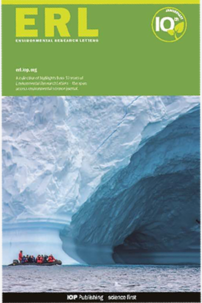
Clean water is key for sustainable development. However, large gaps in monitoring data limit our understanding of global hotspots of poor water quality and their evolution over time. We demonstrate the value added of a data-driven approach (here, random forest) to provide accurate high-frequency estimates of surface water quality worldwide over the period 1992-2010. We assess water quality for six indicators (temperature, dissolved oxygen, pH, salinity, nitrate-nitrite, phosphorus) relevant for the sustainable development goals. The performance of our modeling approach compares well to, or exceeds, the performance of recently published process-based models. The model’s outputs indicate that poor water quality is a global problem that impacts low-, middle-and high-income countries but with different pollutants. When countries become richer, water pollution does not disappear but evolves. Water quality exhibited a signif icant change between 1992 and 2010 with a higher percentage of grid cells where water quality shows a statistically significant deterioration (30%) compared to where water quality improved (22%).
